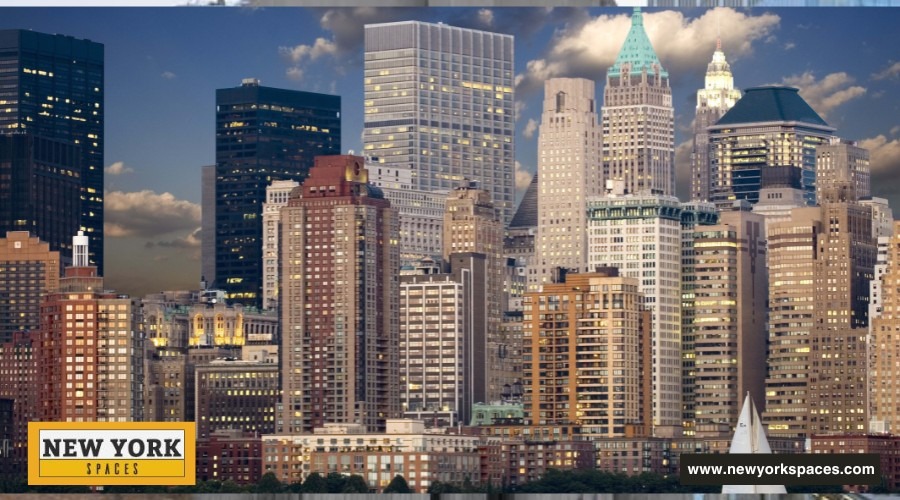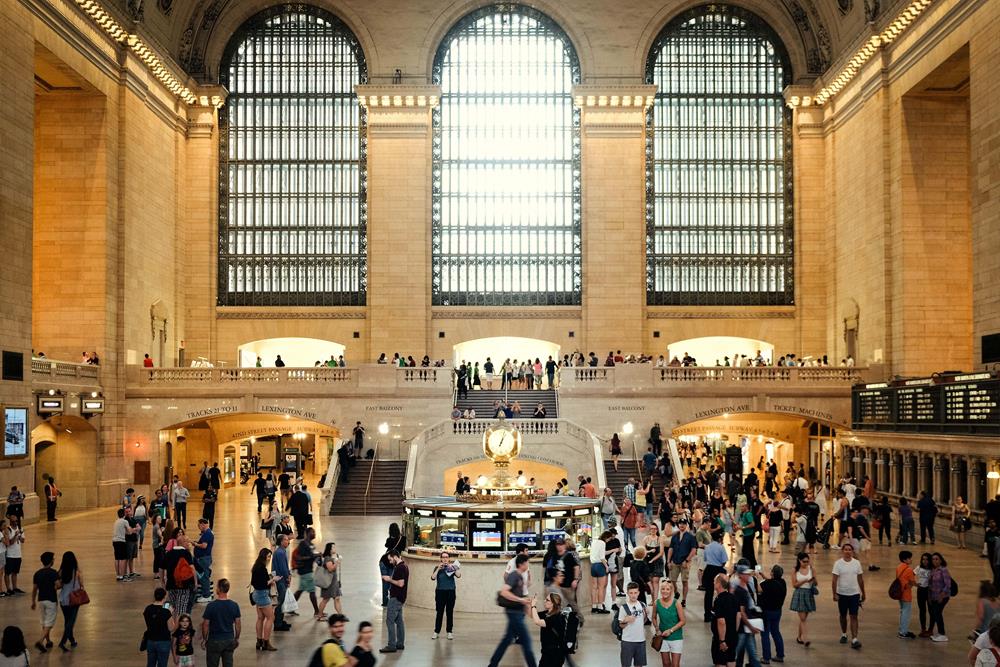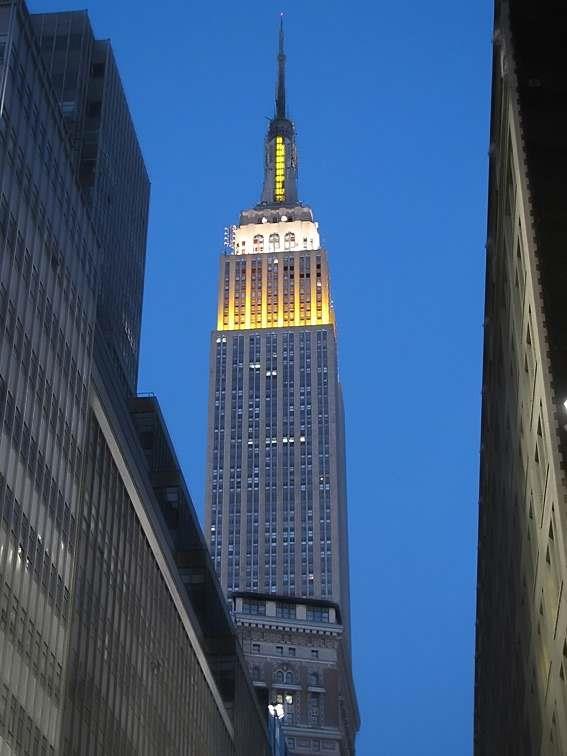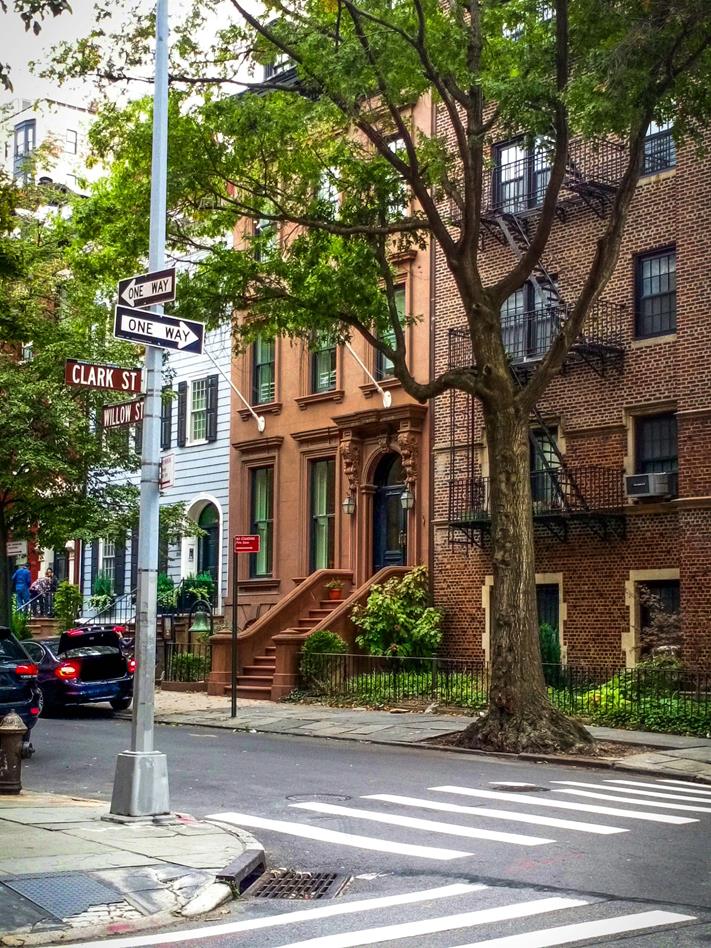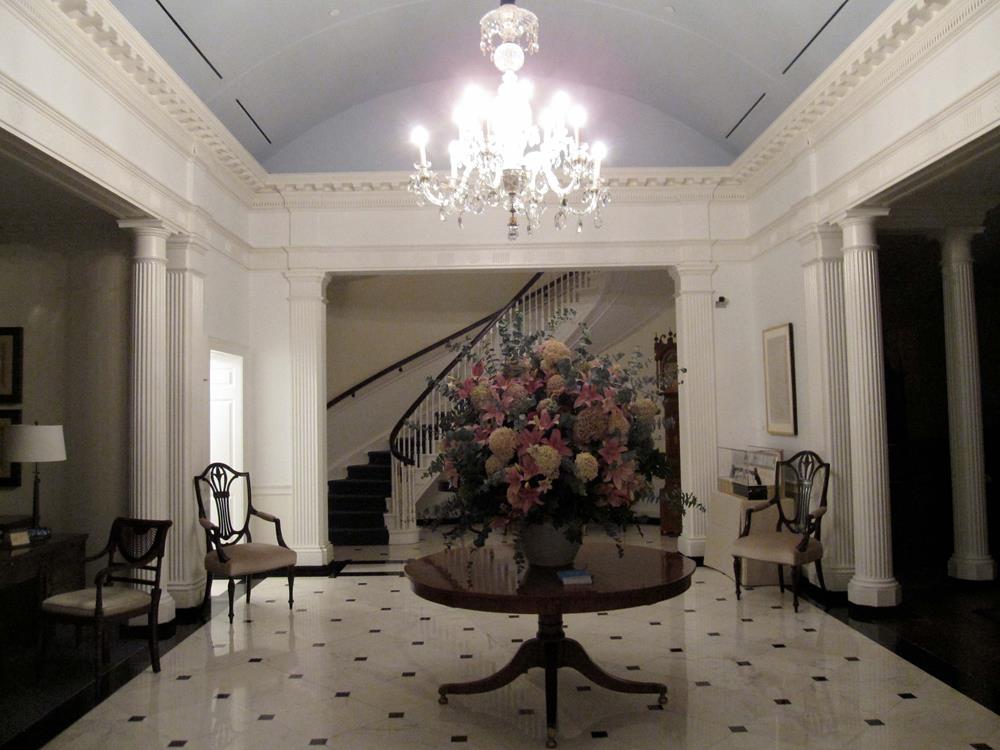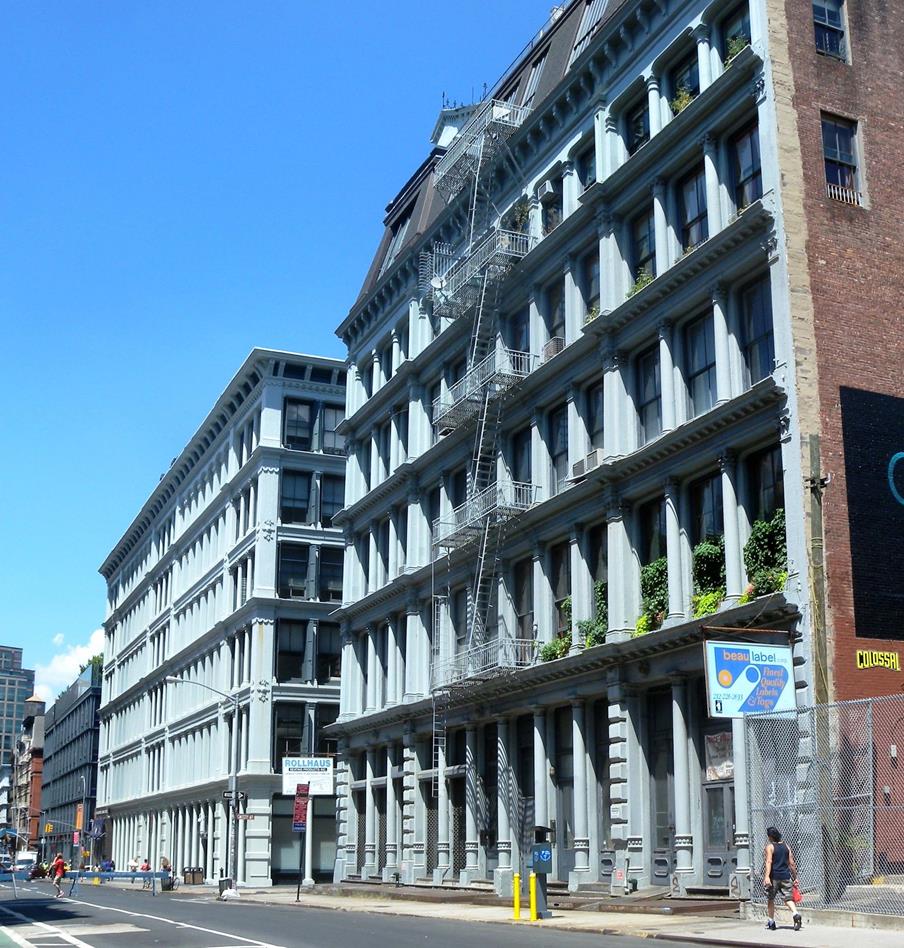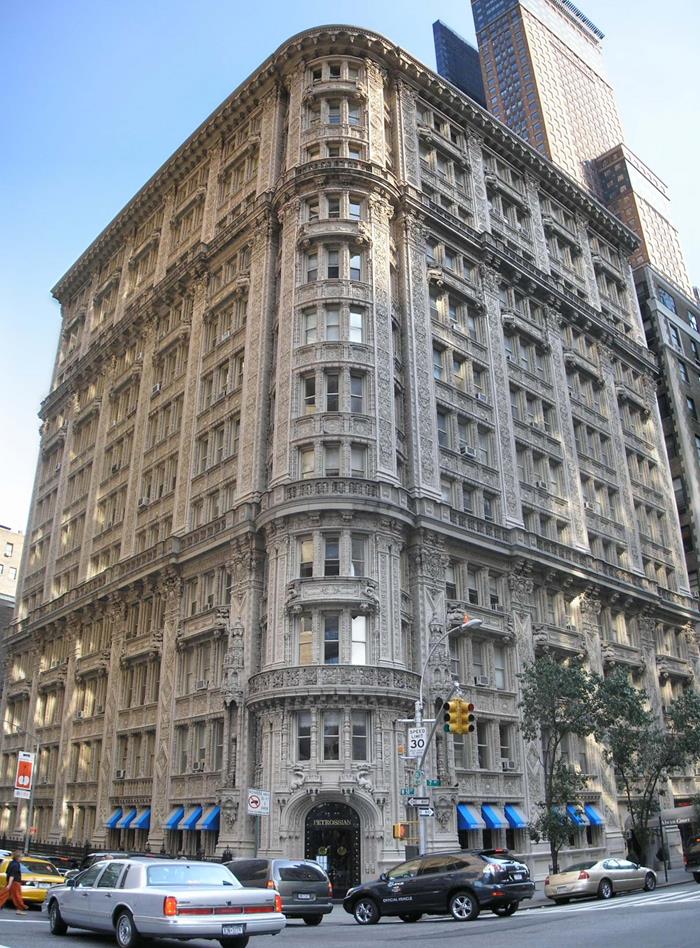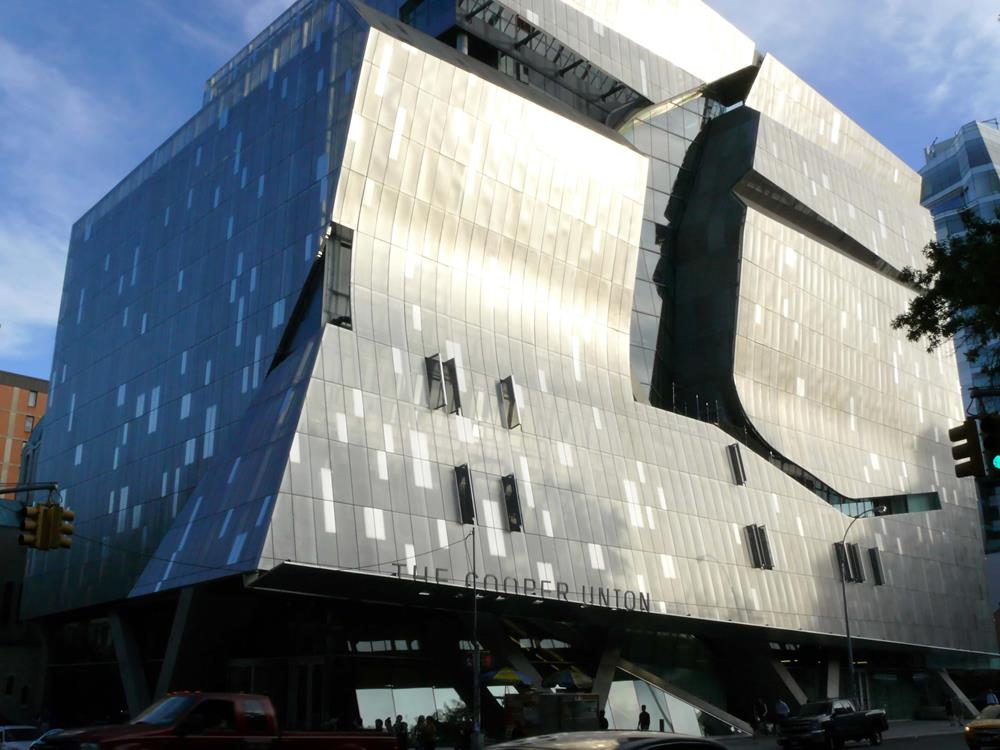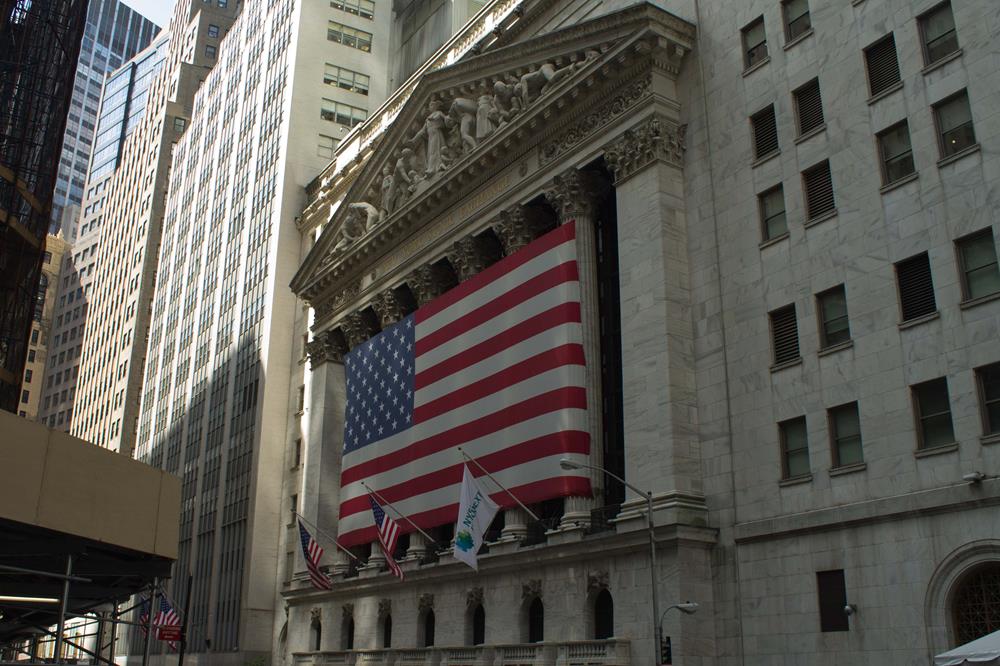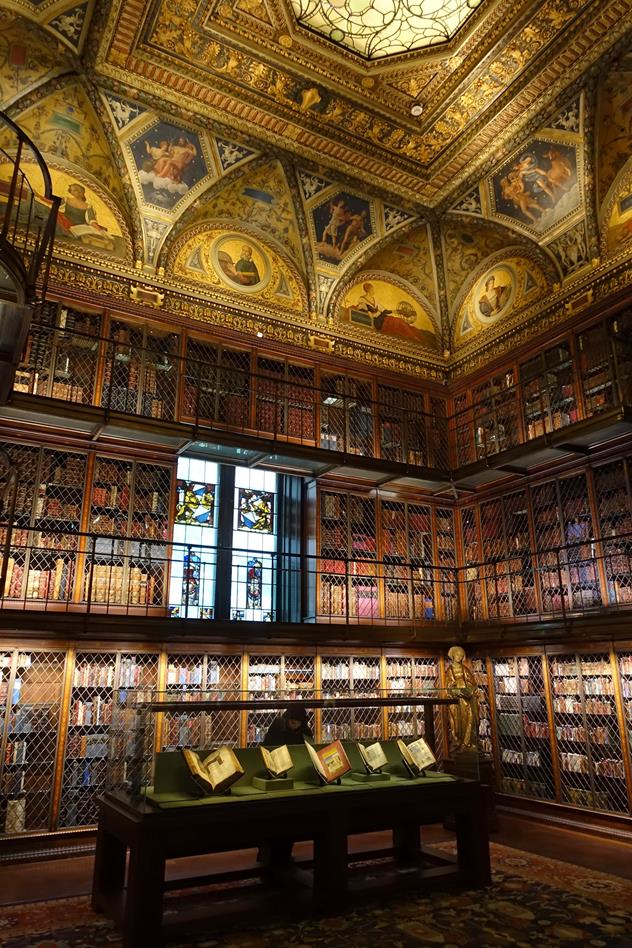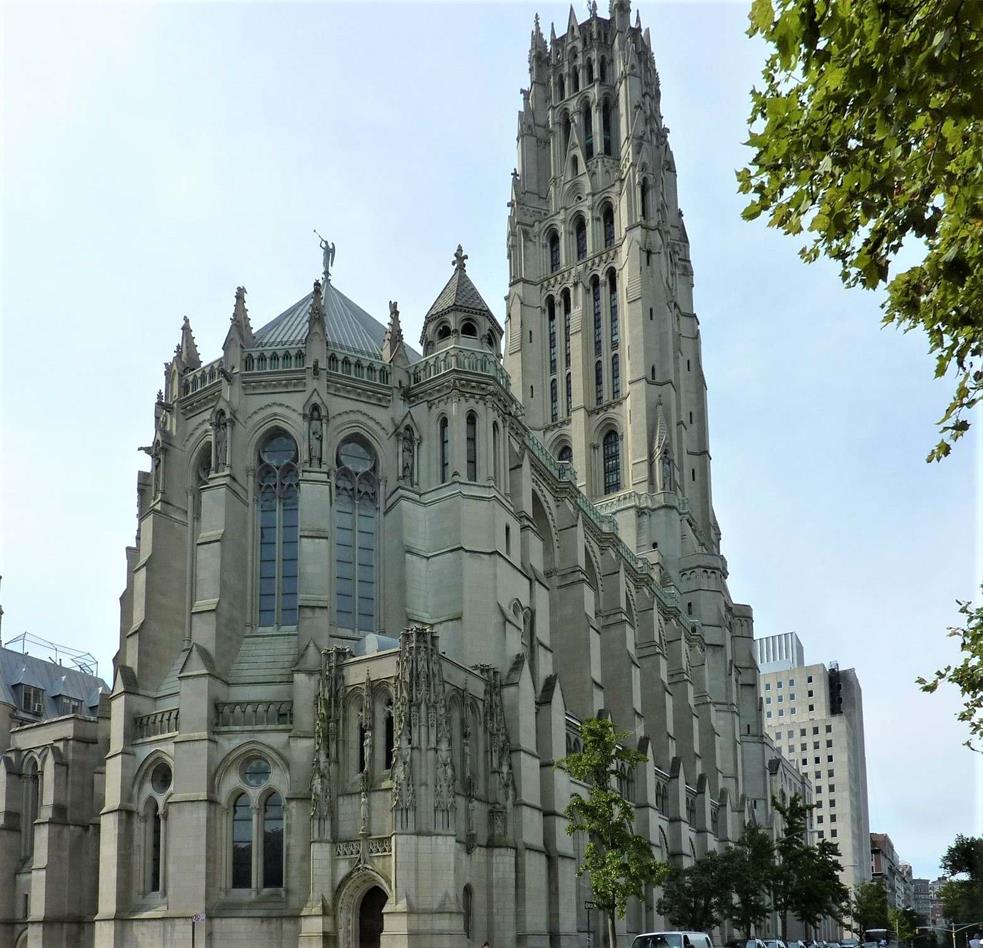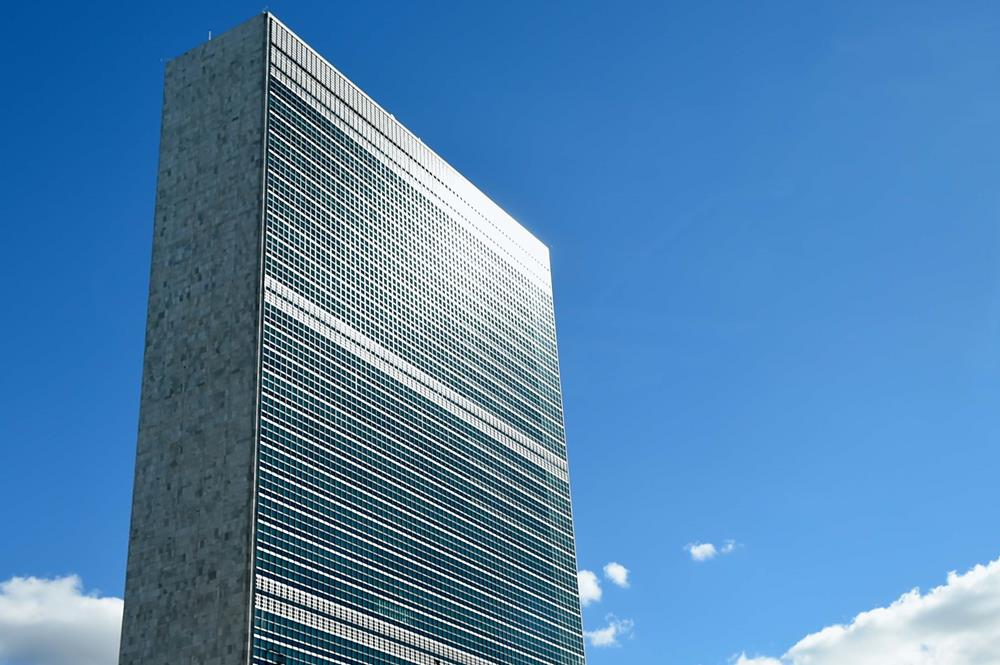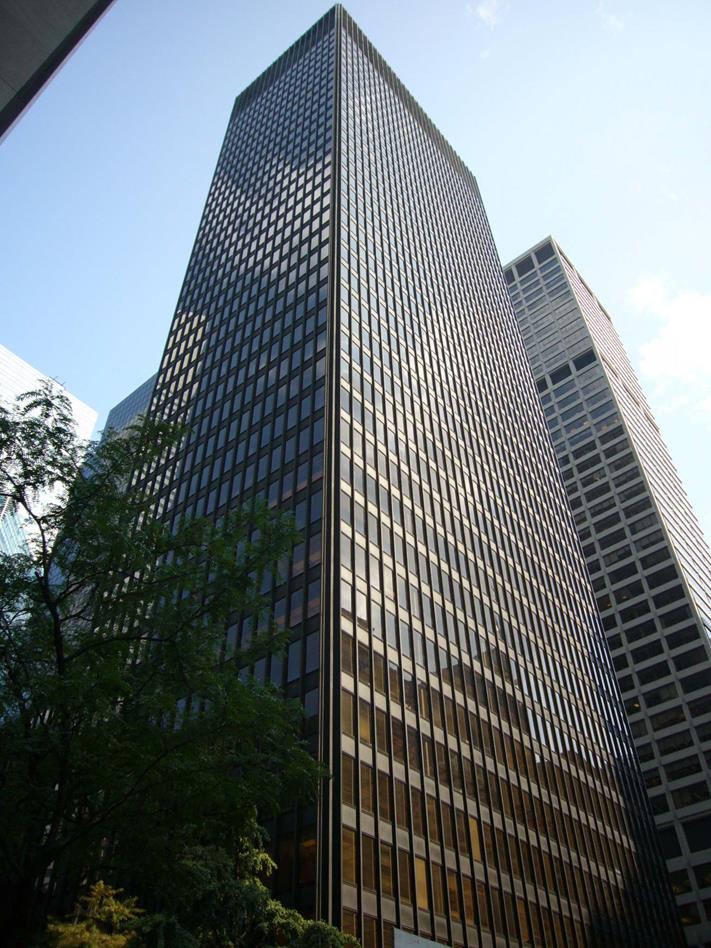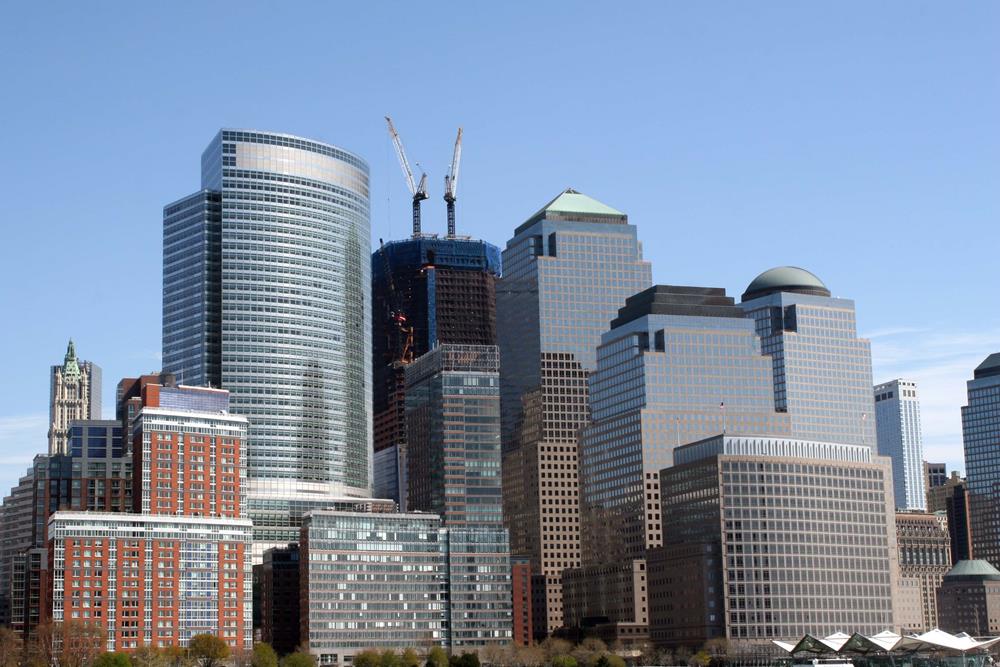In New York City, a place that’s always buzzing with activity, you can see history all around just by looking at the buildings. It’s a city full of different people, and that mix shows up in the city’s buildings and architecture, too. If you’re from New York or want to learn more about the types of buildings you see in the city, stick around! We’re going to talk about the different architectural styles that make New York what it is.
1. Beaux-Arts
Beaux-Arts style is grand, elegant, and meticulous – reflecting the French neoclassical architectural styles. Flourishing in the late 19th and early 20th centuries, Beaux-Arts is characterized by its opulent and ornate design, classical details, and a strong sense of symmetry and order. The style often includes features like grand stairways, elaborate sculptures, and decorative stonework.
Buildings designed in the Beaux-Arts tradition in New York were often intended to convey wealth, power, and cultural refinement, and they played a significant role in shaping the city’s architectural legacy.
Notable examples of Beaux-Arts architecture in New York City include:
- Grand Central Terminal: A masterpiece designed by Reed and Stem and Warren and Wetmore, this iconic transportation hub epitomizes Beaux-Arts architecture with its elaborate sculptures, grandiose spaces, and decorative elements
- New York Public Library: The library, designed by Carrère and Hastings, is another prime example of this style, showcasing monumental staircases, vast reading rooms, and intricate ornamentation.
- Metropolitan Museum of Art: While it has undergone various expansions, the original building designed by Calvert Vaux and Jacob Wrey Mould reflects Beaux-Arts principles with its impressive façade and ornate decorations.
- The Frick Collection: Housed in the former residence of industrialist Henry Clay Frick, this building features a Beaux-Arts design with a sumptuous interior, detailed artwork, and a serene courtyard.
2. Art Deco
Art Deco architecture in New York City stands as a stunning reminder of the city’s embrace of modernity, innovation, and style in the early 20th century. Characterized by its emphasis on geometric shapes, symmetrical patterns, and streamlined forms, Art Deco captures the spirit of the Roaring Twenties and the era of industrialization. This style often features ornate, machine-age motifs, rich colors, and luxurious materials.
In New York, Art Deco buildings are celebrated for their bold, vertical lines, stepped forms that resemble the mechanized gears and cogs of the industrial age, and lavish decorative elements that include zigzags, chevrons, and sunburst motifs.
Notable examples of Art Deco architecture in New York City include:
- Chrysler Building: Designed by William Van Alen, this iconic skyscraper is a quintessential example of Art Deco architecture, with its stainless-steel crown and ornamental eagles
- Empire State Building: Designed by Shreve, Lamb, and Harmon, the building’s tiered structure, linear aesthetic, and lavish lobby decoration embody the essence of Art Deco.
- Rockefeller Center: This complex of buildings, designed by a team of architects, including Raymond Hood, is a testament to Art Deco design, with its streamlined forms, integrated artwork, and geometric decorative elements.
- Radio City Music Hall: A part of Rockefeller Center, designed by Edward Durell Stone and Donald Deskey, it is famous for its lavish interior that includes grand staircases, plush seating, and ornate wall decorations reflective of the Art Deco era.
3. Italianate
The Italianate style is a romantic echo of the 19th-century’s fascination with the aesthetics of the Italian Renaissance. Flourishing during the Victorian era, this architectural style is characterized by its emphasis on elegance and ornamentation.
Italianate buildings in New York are distinguished by their tall, rounded windows, often paired with elaborate window crowns and their roofs with overhanging eaves supported by decorative brackets. Many structures also feature columned entryways and cupolas, creating a distinct look that is both regal and approachable. This style marked a shift from the more austere and functional designs of the past, infusing urban landscapes with a touch of romanticized European flair.
Notable examples of Italianate architecture in New York City include:
- The Bouwerie Lane Theatre: Located in NoHo on Bowery and constructed in 1874, this building, originally designed for the Atlantic Savings Bank, now serves as an off-Broadway theater. Its tall, rectangular, row-like structure, with rounded windows and a sloping roof, is a classic illustration of Italianate architecture.
- Stewart Building: This former department store, located at Broadway and Chambers Street, showcases the Italianate style with its cast-iron façade and rounded arched windows.
- Puck Building: Situated in the NoLita neighborhood, the Puck Building features a detailed façade with ornamental motifs and large, arched windows, typical of the Italianate style.
- King Model Houses: A row of townhouses on West 138th and 139th Streets, known for their distinctive Italianate design with ornamental cornices and window treatments.
4. Colonial
When picturing colonial architecture, one might typically think of cities like Boston or Philadelphia. However, New York, with its rich colonial past, harbors a collection of these historic structures, primarily nestled in lower Manhattan. Colonial architecture, predominantly influenced by European design, was prevalent during the 1600s to 1800s. It features some distinct characteristics like stone, brick, or wood cladding, pitched roofs, and a balanced, symmetrical design.
New York’s colonial buildings are not just relics of the past but are lively testimonies of the city’s evolution from a major colonial power to a modern metropolis. Notably, this style experienced revivals, particularly in the 1870s and 1930s, with variants like Georgian, Federalist, Cape Cod, and French colonial making their appearances.
Notable examples of Colonial architecture in New York City include:
- 726 Madison Avenue (Morrell Smith): A striking example of colonial architecture, showcasing the elegant symmetry and classical details typical of this style.
- 1130 Fifth Avenue (Delano & Aldrich): This building exemplifies the refined and balanced proportions characteristic of colonial design.
- St. Paul’s Chapel (Thomas McBean): An important colonial-era church that stands out for its historical significance and architectural design.
- St. Mark ‘s-in-the-Bowery (Ithiel Town): This structure is a notable representation of colonial architecture, particularly its distinct European influences.
- American Academy of Dramatic Arts (Stanford White): A building that reflects the classical elements of colonial architecture, infused with a sense of theatrical grandeur.
- Gracie Mansion (John McComb Jr.): Known as the official residence of the Mayor of New York City, Gracie Mansion is a prominent example of colonial architecture with its symmetrical design and historical ambiance.
5. Cast Iron Architecture
This style, peaking in popularity in the mid-19th century, reflects the era’s fascination with industrial materials and manufacturing methods. In New York, especially in areas like SoHo, cast iron became a favored material due to its versatility, durability, and ease of production. It allowed for elaborate façades that could be mass-produced and easily assembled, offering a quicker, more economical alternative to stone-carved buildings.
The hallmark of cast iron architecture is its ornate façades, featuring columns, cornices, and other decorative elements, all cast in iron. These buildings, with their large windows and elegant designs, are a unique fusion of functionality and ornamental beauty, echoing the Industrial Revolution’s impact on urban architecture.
Notable examples of Cast Iron architecture in New York City include:
- SoHo Cast Iron Historic District: This area is renowned for its extensive collection of cast iron buildings, particularly along Greene Street, Broome Street, and Mercer Street. It showcases the world’s largest concentration of full cast iron façade buildings.
- The Haughwout Building: Located at 488 Broadway at the corner of Broome Street, built in 1857, it is a splendid example of cast iron architecture, featuring a façade with elaborately detailed columns and ornamental work.
- The Cary Building: Situated at 105-107 Chambers Street, this building is one of the city’s larger cast iron buildings, completed in 1857, featuring a five-story façade with Corinthian columns and a distinct Italianate style.
- The E.V. Haughwout Building: Also at the corner of Broome Street and Broadway, completed in 1857, it is notable for its sophisticated and ornate cast iron façade.
- The Gunther Building: At 469 Broome Street, showcasing typical cast iron architecture with its decorative façade and large windows.
- The Little Singer Building: Located at 561 Broadway, it is an excellent example of how cast iron architecture began to merge with the newer skyscraper form, featuring a slender cast iron façade with elegant Art Nouveau details.
- The Gilsey House: At 1200 Broadway, this former hotel represents a shift from the Italianate style to more elaborate Second Empire and French Renaissance styles in cast iron.
- The Bennett Building: Known for its highly ornate façade, located at 139 Fulton Street, it stands as a significant example of cast iron architecture.
6. Art Nouveau
Art Nouveau architecture in New York City conjures images of an era where architecture was not just about structure but also about artistic expression. This style, emerging at the end of the 19th century, was a creative rebellion against the rigid forms of classical architecture, embracing nature, curves, and fluid lines.
Although this style was not as widespread as in Europe, it still left a distinctive mark in NYC with its organically inspired forms, intricate details, and an emphasis on craftsmanship. Buildings in this style often feature whimsical designs, with ornate floral and plant-like embellishments, curvilinear forms, and elegantly wrought ironwork. The essence of Art Nouveau in New York lies in its attempt to harmonize with the natural environment, creating structures that appear as if they are growing organically from the streets of the city.
Notable examples of Art Nouveau architecture in New York City include:
- The Bayard-Condict Building: Located at 65 Bleecker Street in NoHo, this building, designed by Louis Sullivan, is a remarkable example of Art Nouveau style, showcasing intricate, organic decorative elements.
- The Alwyn Court Apartments: This building at Seventh Avenue and 58th Street is known for its lavish terra-cotta ornamentation, a hallmark of the Art Nouveau movement, with its façade featuring intricate details and sculptural elements.
- Hotel Chelsea: While famous for its bohemian history, the Hotel Chelsea on 23rd Street also displays Art Nouveau characteristics, notably in its wrought iron balconies and decorative motifs.
- The American Fine Arts Society Building (Art Students League of New York): Situated on West 57th Street and designed by Henry Hardenbergh, this building blends subtle Art Nouveau influences in both its interior and exterior decorative features.
- The Paris Theatre: This former movie theater near the Plaza Hotel, though primarily French Neo-Classical, also integrates Art Nouveau elements in its detailing and interior design.
- Gage and Tollner Restaurant: Established in 1879 in Downtown Brooklyn, this historic restaurant features Art Nouveau interior elements, including mirrored walls and gaslight fixtures.
7. Deconstructivism
Deconstructivism is an architectural expression that defies traditional forms and conventions, symbolizing the city’s continual evolution and its embrace of avant-garde ideas. Emerging in the late 20th century, deconstructivism is characterized by a sense of controlled chaos, with buildings that appear fragmented or in motion. This style rejects the notions of harmony and symmetry, instead opting for unexpected angles, irregular shapes, and a collage of disparate elements.
In New York, deconstructivist buildings often look as though they are defying gravity or conventional structural principles, offering a visually stimulating and thought-provoking experience.
Notable examples of deconstructivist architecture in New York City include:
- 41 Cooper Square: Designed by Thom Mayne of Morphosis Architects, this academic building is known for its striking façade that features a skin of irregularly folded metal panels.
- IAC Building: Designed by Frank Gehry, this building showcases typical deconstructivist traits with its curving and tilting glass façade, creating an appearance of flowing movement.
- The New Museum of Contemporary Art: Designed by SANAA, it features a series of shifting box-like structures that challenge conventional museum designs.
8. Neoclassical/Greek Revival
This style, inspired by the architecture of ancient Greece and Rome, is characterized by its grandiose scale, symmetrical design, and the use of classical elements such as columns, pediments, and triangular gables.
Neoclassical buildings in New York often exhibit a majestic quality, with imposing facades, tall columns, and elaborate doorways intended to convey a sense of permanence, tradition, and civic pride.
Notable examples of Neoclassical/Greek Revival architecture in New York City include:
- Federal Hall National Memorial: Formerly a Custom House, this building exemplifies Greek Revival architecture with its impressive columns and grand staircase.
- New York Stock Exchange: Designed by George B. Post, this iconic building is a classic representation of Neoclassical architecture, featuring grand columns and a majestic façade.
- Alexander Hamilton U.S. Custom House: Now housing the National Museum of the American Indian, this building, designed by Cass Gilbert, showcases the Beaux-Arts style, a later development of Neoclassical architecture, with its grand rotunda and classical columns.
- St. Patrick’s Old Cathedral: This cathedral in New York’s Little Italy, although not entirely Neoclassical, incorporates elements of Greek Revival in its design, especially notable in its earlier phases before the Gothic Revival redesign.
9. Renaissance Revival
In the late 19th and early 20th century, New York City had an affinity for the opulence and elegance of the European Renaissance. This architectural style, reviving elements from the 15th and 16th-century Italian Renaissance, is characterized by its symmetry, proportion, and the use of classical design elements such as columns, pilasters, and rounded arches.
Renaissance Revival in New York buildings often display richly decorated facades, arched windows, and ornate detailing, conveying a sense of grandeur and sophistication.
Notable examples of Renaissance Revival architecture in New York City include:
- The Villard Houses: A series of six attached brownstone mansions located on Madison Avenue, designed by McKim, Mead & White, which are exemplary of the Renaissance Revival style, featuring detailed carvings and grand archways.
- The New York Historical Society: The building’s design, with its elegant and classic detailing, is a beautiful example of how Renaissance Revival influences merge with the urban fabric of the city.
- The Morgan Library & Museum: Originally the private library of financier J.P. Morgan, the structure, designed by Charles McKim, displays a refined and stately appearance typical of Renaissance Revival.
- The Bowery Savings Bank: Located on 130 Bowery, this building, designed by Stanford White, is a notable example with its grand façade and elaborate interiors that showcase the luxurious aspects of the Renaissance Revival style.
10. Gothic Revival
When the term “Gothic Revival” springs to mind, images of grand cathedrals and intricately detailed stone carvings from medieval Europe often come to the fore. Yet, in the heart of New York City, this architectural style has etched an indelible mark, standing as a testament to a time when architectural design was an expression of cultural and spiritual grandeur.
Originating in the late 18th century, the Gothic Revival was a romantic celebration of the medieval Gothic style, reborn with a modern twist. In New York, this style is often showcased through pointed arches, ribbed vaults, and flying buttresses, creating a sense of awe and splendor amidst the urban landscape.
While it was primarily used for religious buildings, its influence gradually spread to university buildings, homes, and other structures. Its resurgence in the 19th and early 20th centuries was a response to the growing appreciation for historically inspired designs, offering a dramatic counterpoint to the emerging Modernism.
Notable examples of Gothic Revival architecture in New York City include:
- Riverside Church: Designed by Allen, Pelton, and Collens, this church is a spectacular example of 20th-century Gothic Revival architecture, with its towering bell tower and detailed stonework.
- St. Patrick’s Cathedral: Designed by James Renwick Jr., it’s an emblematic piece of Gothic Revival architecture, with its spires and stunning stained glass.
- The Woolworth Building: Designed by Cass Gilbert, this skyscraper beautifully blends Gothic Revival style with modern building technology, resulting in a structure that’s both historically resonant and distinctly urban.
- Trinity Church: With a design by Richard Upjohn, it stands as a historic and functioning parish church, distinguished by its neo-Gothic style.
- Grace Church: Designed by James Renwick Jr., this church is another example of Gothic Revival architecture, with its elegant and ornate design.
11. Brutalism
Brutalism is an architectural style that stands in stark contrast to the city’s more ornate and historic buildings. This style, which rose to prominence in the mid-20th century, is characterized by its bold, raw, and unadorned aesthetic.
Brutalism, a term derived from the French “béton brut,” meaning “raw concrete,” is known for its massive, monolithic forms and extensive use of exposed concrete and other materials in their raw state.
In New York City, Brutalist architecture evokes a sense of strength and functionality, offering a no-frills approach to design that prioritizes stark geometric forms and rugged materiality over decorative elements. The style often includes large-scale, blockish structures with a focus on vertical and horizontal lines, creating a commanding and formidable presence.
Notable examples of Brutalist architecture in New York City include:
- Solomon R. Guggenheim Museum: Designed by Frank Lloyd Wright and completed in 1937, the museum is a defining example of Brutalism. The building’s bold form and strong use of concrete embody the quintessential features of this architectural style.
- Metropolitan Correctional Center: A facility that exemplifies the Brutalist aesthetic with its imposing concrete structure and stark, functional design.
- Lehman College (The Apex): Part of the City University of New York system, this building showcases the Brutalist approach with its raw concrete surfaces and bold geometric forms.
- Whitney Museum of American Art (original building): Designed by Marcel Breuer, the museum’s original building (now home to the Met Breuer) is a prime example of Brutalism with its striking inverted ziggurat structure.
- Hunter College (North Building): Reflecting the typical Brutalist style, this building features robust concrete forms and a powerful, fortress-like appearance.
12. International Style
Emerging in the 1920s and 1930s, the International architectural style is characterized by its emphasis on volume over mass, the use of lightweight, mass-produced materials, and a rejection of ornamental and historical forms. Buildings in the International Style are known for their simple, clean lines, geometric forms, and the integration of industrial materials such as steel and glass, creating an aesthetic that is both functional and minimalist.
Notable examples of International Style architecture in New York City include:
- Headquarters of the United Nations: An iconic complex of buildings that epitomizes the International Style with its sleek, rectilinear forms and extensive use of glass.
- Seagram Building: Designed by Ludwig Mies van der Rohe and Philip Johnson, this skyscraper is a landmark of International Style, celebrated for its minimalist, unadorned façade and use of high-quality materials.
- MetLife Building: Formerly known as the Pan Am Building, this structure exemplifies the International Style in its functional design and imposing presence in the New York City skyline.
13. Modernism
Modernism in New York City is a tribute to the innovative spirit of the 20th century, showcasing an architectural style that breaks away from the past to embrace simplicity, functionality, and a new aesthetic of ‘form follows function.’ This style, emerging in the late 19th and early 20th centuries, represents a radical departure from traditional architecture by emphasizing minimalism, the use of new materials like steel and glass, and a rejection of ornamental excess.
In New York, Modernist buildings are characterized by their clean lines, unadorned surfaces, and often asymmetrical forms. These structures reflect the city’s rapid technological progress and cultural shifts, favoring utility and simplicity over elaborate decoration.
Notable examples of Modernist architecture in New York City include:
- Seagram Building: Designed by Ludwig Mies van der Rohe and Philip Johnson, this skyscraper is a landmark of Modernist design, with its sleek, minimalist façade and use of high-quality materials like bronze and travertine.
- United Nations Headquarters: A complex of buildings designed by a team of international architects, including Le Corbusier and Oscar Niemeyer, exemplifying the ideals of Modernist architecture with its streamlined forms and functional design.
- Solomon R. Guggenheim Museum: Though it also reflects elements of Brutalism, the museum’s unique spiral design by Frank Lloyd Wright is a notable Modernist contribution to the city’s architectural landscape.
- Lever House: One of the first glass-walled, curtain-walled office buildings in the city, designed by Gordon Bunshaft of Skidmore, Owings & Merrill, representing a shift towards the International Style of Modernism.
14. Postmodernism
Postmodernism celebrates diversity, complexity, and playfulness, emerging as a reaction against the strict forms and perceived impersonality of Modernism. Flourishing from the 1960s onward, this style is characterized by its eclectic approach, embracing historical references, bold colors, and whimsical designs.
Postmodern buildings in New York often mix different styles and materials, break the ‘rules’ of traditional architecture, and incorporate symbolic and cultural references. This style stands out for its willingness to challenge norms, combining the old and the new to create structures that are both innovative and referential.
Notable examples of Postmodern architecture in New York City include:
- Sony Tower (formerly AT&T Building): Designed by Philip Johnson and John Burgee, this building is renowned for its ornamental top, which resembles a piece of Chippendale furniture and is a significant departure from the minimalist designs of Modernism.
- World Financial Center (now Brookfield Place): This complex, designed by Cesar Pelli, incorporates various historical styles and is known for its grand Winter Garden atrium.
- One Worldwide Plaza: Designed by David Childs of Skidmore, Owings & Merrill, this building features a mix of traditional and contemporary elements, with a distinctive copper pyramid at its top.
- New York Times Building: Designed by Renzo Piano and FXFOWLE Architects, it showcases a Postmodern approach with its curtain wall of clear glass and ceramic rods.
15. New Formalism
An architectural approach that blends modernist styles with classical elements, New Formalism emerged prominently in the mid-20th century. This style is characterized by its incorporation of traditional architectural features like columns and pediments, with a modern twist.
New Formalist buildings are often noted for their elegance, symmetry, and the use of rich materials such as marble and granite. These structures typically showcase an attention to detail and a return to the monumentality and decorum of classical architecture juxtaposed with modern building techniques and materials.
A notable example of New Formalism in New York City is:
- Lincoln Center: This iconic cultural complex embodies the New Formalism style with its elegant and symmetrical design, use of luxurious materials, and incorporation of modernist principles in its overall layout and design.
Conclusion
New York City, a bustling metropolis often dubbed the “concrete jungle,” is not just a hub of relentless activity and diverse cultures; it’s also a living museum of architectural evolution. From the regal Beaux-Arts masterpieces to the sleek International Style skyscrapers, each architectural style has contributed to the rich diversity that makes New York an ever-evolving, living canvas.

